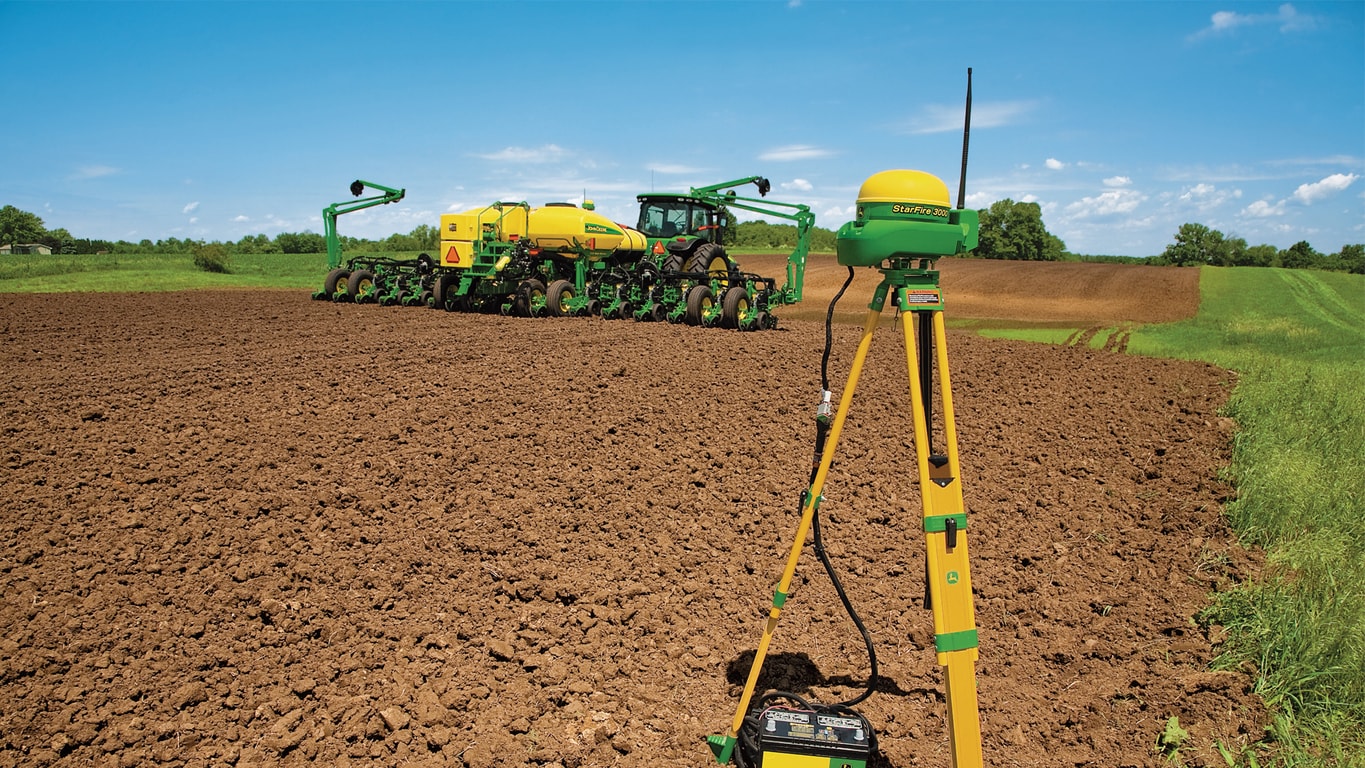
John Deere Radio RTK 900
- Provides +/- 1 inch pass-to-pass accuracy season after season, and year after year
- Use a Dealer-owned RTK network to reduce your administrative expenses
- Provides less chance of radio interference, and RTK Extend to minimize shading signal loss
- Requires a StarFire 6000 receiver, SF3 Ready Activation, and RTK Ready Activation
- Requires RTK subscription provided by your John Deere dealer or your own base station
Features
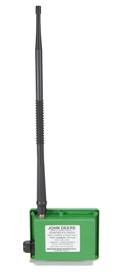 John Deere RTK Radio 900
John Deere RTK Radio 900

Base stations using John Deere RTK Radio 900 are very easy to set up for several reasons:
Licensing
The John Deere RTK Radio 900 operates in the 902-MHz to 928-MHz frequency range. This range does not require a license from the U.S. Federal Communications Commission (FCC), so the base station can be set up anywhere as long as it does not broadcast more than 4 W of power.
For more information on FCC regulations of the 902-MHz to 928-MHz range, visit www.fcc.gov or talk to a local John Deere dealer.
Mounting
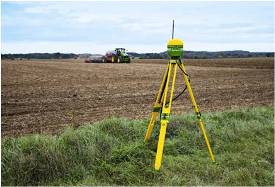 Mobile base station configuration
Mobile base station configuration
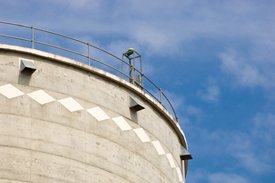 Permanent base station configuration
Permanent base station configuration
A John Deere RTK Radio 900 base station can be used in a mobile setup or mounted permanently to a building, concrete silo, or radio tower. Depending on the operation, either type of mounting can be used:
- Mobile base station
- Fields are spread out and one base station cannot cover all of the ground
- For producers in areas with hilly terrain and lots of foliage where a permanent base station would not provide adequate coverage
- Situations where accuracy is needed, but not repeatability
- Permanent base station
- Producers in areas with flat terrain and little foliage where a permanent base station would provide adequate coverage in a large region
- Multiple tractors in different fields could use the same base station instead of purchasing a second one
- Situations where accuracy and repeatability are needed
Repeaters
 Repeater diagram with Repeater (1) and RTK Base Station (2)
Repeater diagram with Repeater (1) and RTK Base Station (2)

If a producer using RTK discovers a signal hole where the signal is lacking, a repeater radio can be easily set up to help fill the gap.
 Repeater diagram with repeater (1) and RTK base station (2)
Repeater diagram with repeater (1) and RTK base station (2)

Broaden RTK availability with repeaters
RTK repeaters are radios that can be used to improve base station signal coverage around obstacles, such as trees or rolling terrain. The purpose of the RTK repeater is to receive the correction signal coming from the base station and then transmit that correction signal.
More than one repeater can be used with one base station, but the repeater cannot receive signal from each other in a daisy-chain configuration. In order to operate, a repeater must be connected to a 12-V power source.
A repeater is the same as the radio that is on a machine or base station receiver.
A repeater consists of the following:
- John Deere RTK Radio 450 or 900
- Power harness and bracket
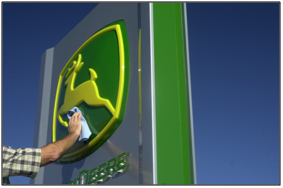 Dealers are critical to RTK network's success
Dealers are critical to RTK network's success

More than 200 John Deere dealers across the United States and Canada have set up a large, robust RTK network. This is beneficial for several reasons:
- Producers have a lower investment cost because the dealer purchases and is responsible for base station upkeep.
- Dealer networks cover more area with the RTK signal, giving many producers access to RTK on all of their grounds.
- RTK network is owned, maintained, and supported by a local, certified John Deere dealer.
Contact a local John Deere dealer to inquire about RTK network coverage.
A U.S. Federal Communications Commission (FCC) license is required when utilizing the John Deere RTK Radio 450 on a base station or as a repeater.
Licensing is not required for an RTK machine configuration.
For more details and assistance on obtaining a license, refer to the Dealer Corner section of StellarSupport™ system.



